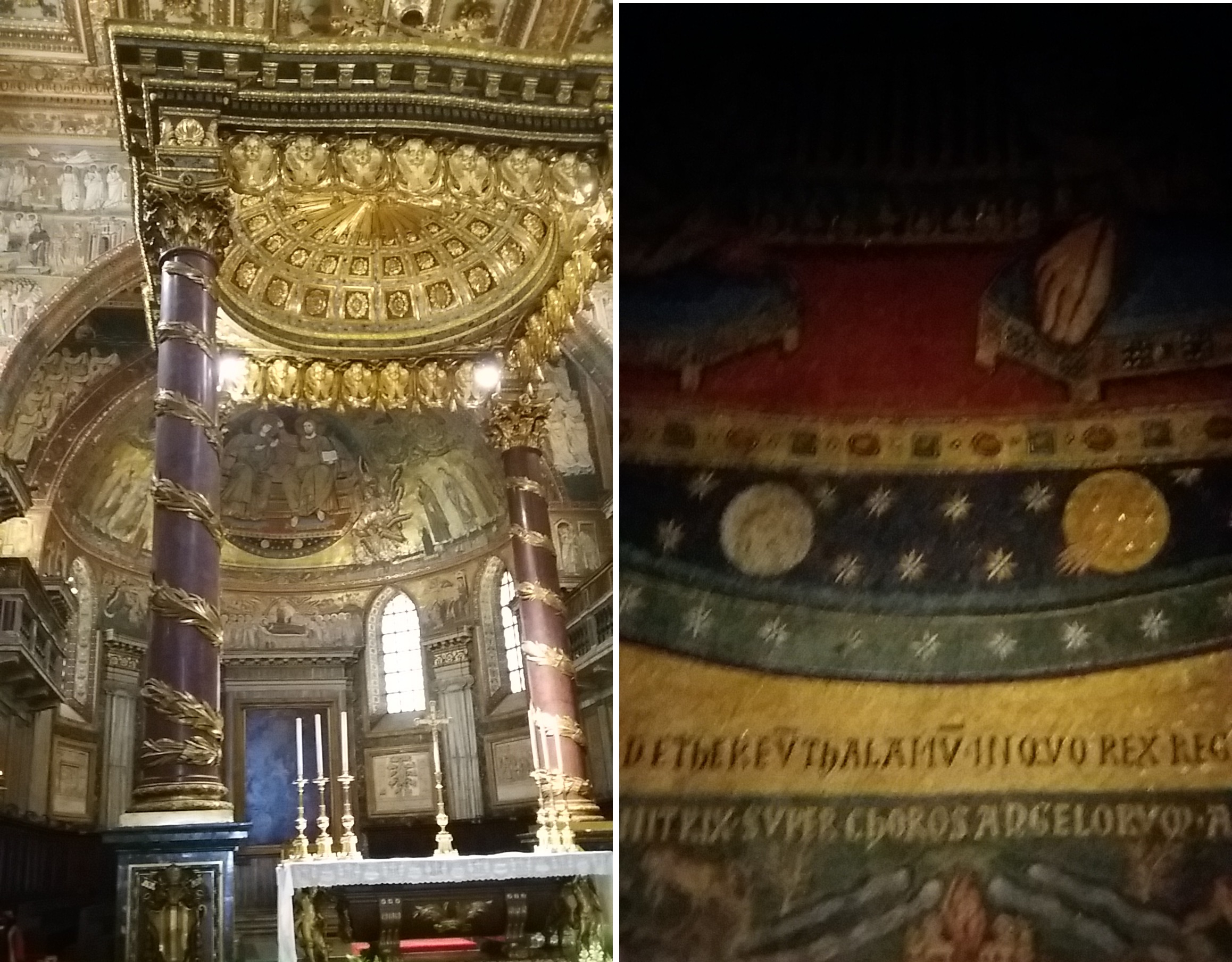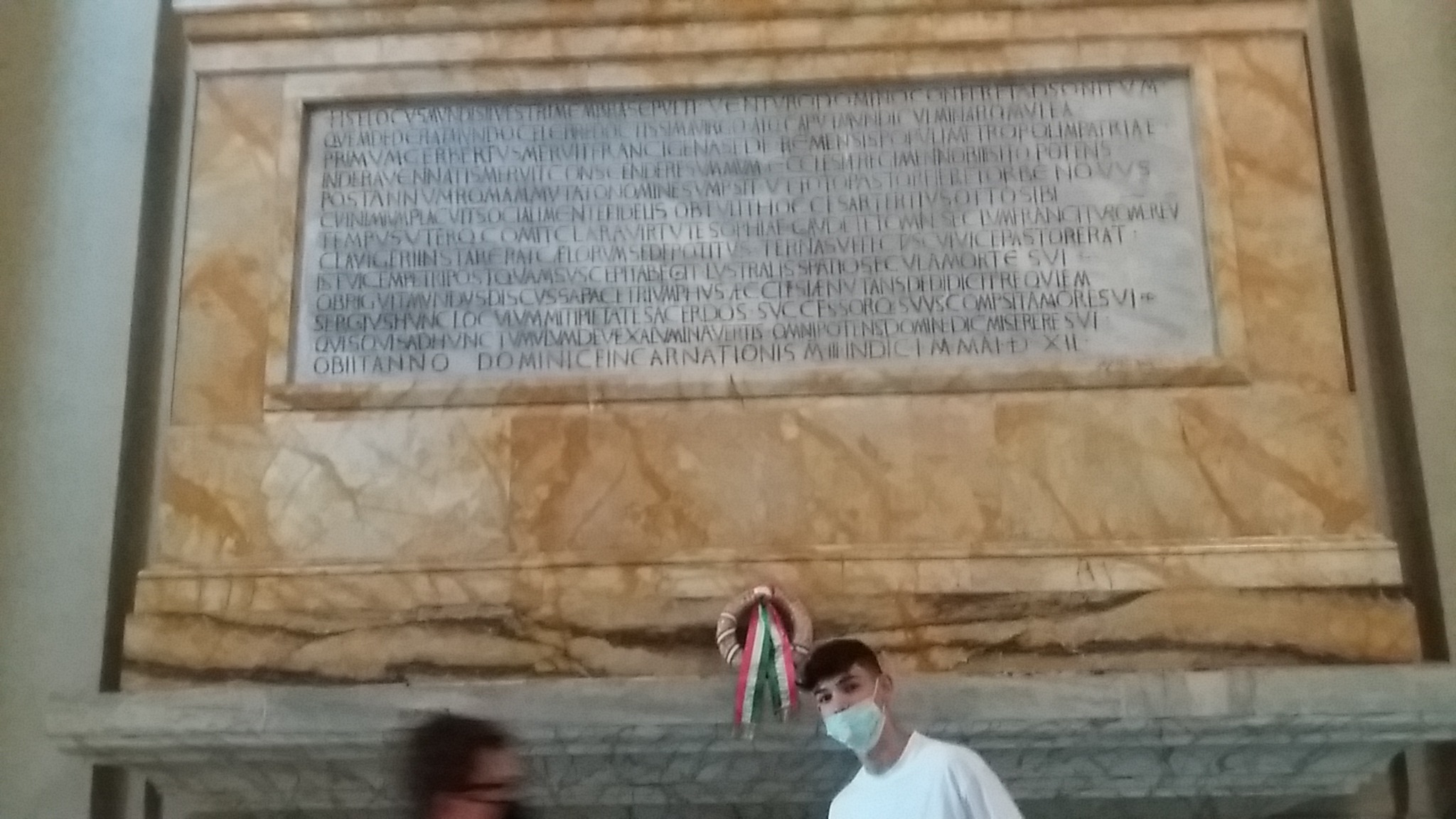The meeting started at 11 AM on Thursday May 12, 2022 from the papal Basilica of Santa Maria Maggiore in Rome

The Sun and the Moon in the apse of this Basilica have been made by Jacopo Torriti in the 13th century. The Latin inscription below Jesus and Mary says "Maria Virgo Assumpta Est ad Aethereum Thalamum in quo Rex Regum Stellato Sedet Solio". The Virgin Mary has been assumpted at the heavenly thalamus, where the King of kings sits on the starry throne where Gerbert-Sylvester II guided a famous procession in the night of August 15, 1000 to the Lateran.
After this visit, the meeting moved to the Basilica of Santa Croce in Gerusalemme, where Gerbert celebrated mass on May 3, 1003 and started to be ill. A legend appeared in 1080 AD (William of Malmesbury) attributed to Gerbert the invention of an automat. It predicted that Gerbert will not die if not going to Jerusalem, and the mass in Santa Croce "in Jerusalem" represented the violation to the "immortality condition" obtained by the magic automat.
The meeting moved then to the Basilica of San Giovanni in Laterano, where the epitaph of Gerbertus' tomb is still there, included by Francesco Borromini in the renovation of the Basilica in 1648, upon the will of Pope Benedict XIV (founder of the Pontifical Academy of Sciences). Beyond the legend of his tomb, which would emit humidity for the death of a Pope or a Cardinal, and beyond another one about his body cut in pieces (false, upon verification in 1648), Gerbert of Aurillac (ca 938-12 May 1003) was renowned as the greatest scholar of his time. Bishop of Reims, Ravenna and Rome he "jumped from R to R in R" in his three archbishoprics, in a period of time characterized by the rule that a Bishop could not change site.
Gerbert of Aurillac introduced in Europe the Astrolabe and the Abacus from the Arabs, even inventing new algorithms for speeding their calculations. He was also a music theorist and organ builder, as well as a philosopher who anticipated Scholastic school. His epistolary is the vaster of his time, showing a fine politician, geographer, scientist, teacher and pastor.
A special guest of this event was Prof. Luca Montecchio (UniEcampus), historian and author of "Gerberto d'Aurillac. Silvestro II" with graphe.it (2011).

The tomb of Gerbert visited on May 12, 2022: the cockade placed by the Hungarian Government, each year, is a symbol for remembering the role of Pope Sylvester II in creating that country, by the consecration in 1000 AD of the crown to its King St. Steven.
References C. Sigismondi, Gerbertian Paths for the Jubilee, Gerb 8, 83 (2015) https://ui.adsabs.harvard.edu/abs/2015Gerb....8...83S